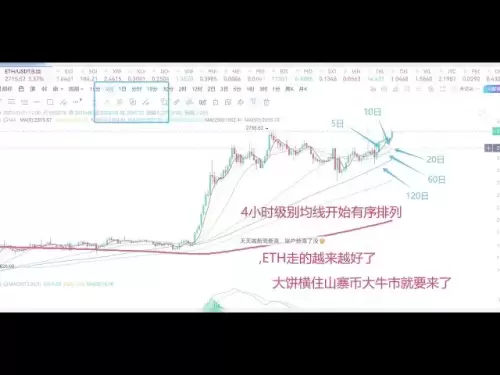-
 Bitcoin
Bitcoin $108,266.3477
-2.87% -
 Ethereum
Ethereum $2,549.8246
-3.89% -
 Tether USDt
Tether USDt $1.0000
0.00% -
 XRP
XRP $2.3487
-3.32% -
 BNB
BNB $665.2643
-3.19% -
 Solana
Solana $176.7790
-0.97% -
 USDC
USDC $0.9999
0.00% -
 Dogecoin
Dogecoin $0.2324
-3.86% -
 Cardano
Cardano $0.7732
-3.95% -
 TRON
TRON $0.2660
-4.25% -
 Sui
Sui $3.6204
-7.49% -
 Hyperliquid
Hyperliquid $35.0199
13.60% -
 Chainlink
Chainlink $16.0997
-2.54% -
 Avalanche
Avalanche $24.2495
-3.90% -
 Stellar
Stellar $0.2898
-3.58% -
 Shiba Inu
Shiba Inu $0.0...01473
-3.81% -
 Bitcoin Cash
Bitcoin Cash $432.4606
-0.07% -
 Hedera
Hedera $0.1965
-3.38% -
 UNUS SED LEO
UNUS SED LEO $8.7872
-1.15% -
 Toncoin
Toncoin $3.0221
-4.92% -
 Polkadot
Polkadot $4.6877
-4.40% -
 Litecoin
Litecoin $97.4331
-1.49% -
 Monero
Monero $391.9178
-3.09% -
 Bitget Token
Bitget Token $5.5514
5.18% -
 Pepe
Pepe $0.0...01461
0.19% -
 Pi
Pi $0.7589
-8.85% -
 Dai
Dai $0.9999
0.02% -
 Ethena USDe
Ethena USDe $1.0002
0.01% -
 Bittensor
Bittensor $445.4724
-5.16% -
 Uniswap
Uniswap $6.0922
-5.34%
How to combine KDJ with Bollinger Bands? Which form has a higher success rate?
Combining KDJ indicator with Bollinger Bands can enhance crypto trading; divergence-based method often yields higher success rates due to added confirmation.
May 23, 2025 at 11:01 am
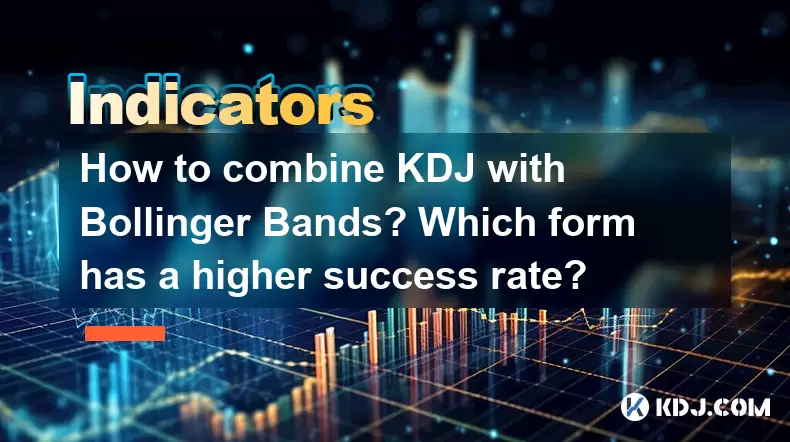
The integration of the KDJ indicator with Bollinger Bands is a popular strategy among cryptocurrency traders looking to enhance their technical analysis toolkit. This article will delve into how these two indicators can be combined effectively and explore which forms of this combination might yield higher success rates.
Understanding the KDJ Indicator
The KDJ indicator, also known as the Stochastic Oscillator, is a momentum indicator used to gauge the overbought or oversold conditions of a cryptocurrency. It consists of three lines: K, D, and J. The K line represents the fast stochastic line, the D line is the slow stochastic line, and the J line is a more sensitive line that traders often use to anticipate potential reversals.
- K Line: Calculated as (Current Close - Lowest Low) / (Highest High - Lowest Low) 100
- D Line: A 3-period moving average of the K line
- J Line: Calculated as 3 K - 2 D
When the KDJ lines cross above 80, it typically signals an overbought condition, suggesting a potential sell signal. Conversely, when they drop below 20, it indicates an oversold condition, suggesting a potential buy signal.
Understanding Bollinger Bands
Bollinger Bands are a volatility indicator developed by John Bollinger. They consist of three lines: the middle band, which is typically a 20-period moving average, and the upper and lower bands, which are standard deviations away from the middle band. The upper band is usually set at two standard deviations above the middle band, while the lower band is set at two standard deviations below.
- Middle Band: 20-period moving average
- Upper Band: Middle Band + (2 Standard Deviation)
- Lower Band: Middle Band - (2 * Standard Deviation)
When the price touches or crosses the upper band, it may indicate that the asset is overbought, suggesting a potential sell signal. Similarly, when the price touches or crosses the lower band, it may indicate that the asset is oversold, suggesting a potential buy signal.
Combining KDJ with Bollinger Bands
To combine the KDJ indicator with Bollinger Bands, traders look for confluence between the signals provided by both indicators. Here's a step-by-step approach to integrating these two tools:
- Identify the Trend: Start by observing the overall trend of the cryptocurrency using the middle band of the Bollinger Bands. If the price is consistently above the middle band, it suggests an uptrend. If it's below, it suggests a downtrend.
- Look for Overbought/Oversold Conditions: Use the KDJ lines to identify when the cryptocurrency is overbought or oversold. When the KDJ lines are above 80, it indicates an overbought condition. When they are below 20, it indicates an oversold condition.
- Check Bollinger Band Touch: Look for instances where the price touches or crosses the Bollinger Bands. A touch or cross of the upper band combined with the KDJ lines above 80 can confirm an overbought condition. A touch or cross of the lower band combined with the KDJ lines below 20 can confirm an oversold condition.
- Confirm Signals: Confirm the signals by looking for additional signs such as divergence or convergence between the KDJ lines and the price action. For example, if the price is making lower lows but the KDJ lines are making higher lows, it suggests a bullish divergence and a potential reversal.
Different Forms of Combination
There are several ways to combine the KDJ indicator with Bollinger Bands, each with varying degrees of success rates:
- Basic Combination: This involves simply looking for overbought and oversold signals from both indicators and trading based on the confluence of these signals. This method is straightforward but may have a lower success rate due to its simplicity.
- Divergence-Based Combination: This method involves looking for divergences between the price action and the KDJ lines while also considering the Bollinger Bands. For instance, a bullish divergence on the KDJ combined with the price touching the lower Bollinger Band can signal a strong buy opportunity. This method tends to have a higher success rate due to the additional confirmation from divergence.
- Breakout-Based Combination: This method involves looking for breakouts from the Bollinger Bands and confirming them with the KDJ indicator. For example, a breakout above the upper Bollinger Band combined with the KDJ lines moving out of the overbought zone can signal a strong continuation of the uptrend. This method can also have a higher success rate due to the added confirmation of the breakout.
Which Form Has a Higher Success Rate?
Determining which form of the KDJ and Bollinger Bands combination has a higher success rate can be challenging, as it depends on various factors such as market conditions, the specific cryptocurrency being traded, and the trader's experience level. However, based on general observations and trader feedback, the divergence-based combination tends to have a higher success rate. This is because it incorporates additional layers of confirmation, making the signals more reliable.
The divergence-based combination looks for discrepancies between the price action and the KDJ lines, which can provide early signals of potential reversals. When these signals are combined with the touch or cross of the Bollinger Bands, it creates a powerful confluence that can increase the probability of successful trades.
Practical Example
Let's consider a practical example of using the divergence-based combination of KDJ and Bollinger Bands to trade Bitcoin (BTC).
- Step 1: Open your trading platform and add both the KDJ indicator and Bollinger Bands to your Bitcoin chart.
- Step 2: Observe the overall trend using the middle band of the Bollinger Bands. Suppose the price is consistently above the middle band, indicating an uptrend.
- Step 3: Look for instances where the price touches the lower Bollinger Band. Suppose the price touches the lower band, suggesting a potential buying opportunity.
- Step 4: Check the KDJ lines. If the KDJ lines are below 20, indicating an oversold condition, and you notice a bullish divergence (the price makes lower lows while the KDJ lines make higher lows), it confirms the buying opportunity.
- Step 5: Enter a long position on Bitcoin, setting a stop-loss just below the recent low and a take-profit at a reasonable resistance level.
By following these steps and using the divergence-based combination, traders can increase their chances of making successful trades.
Frequently Asked Questions
Q1: Can the KDJ and Bollinger Bands combination be used for short-term trading?
Yes, the KDJ and Bollinger Bands combination can be effectively used for short-term trading. The KDJ indicator is particularly sensitive to short-term price movements, making it suitable for identifying quick overbought and oversold conditions. When combined with Bollinger Bands, which can help confirm these conditions, traders can capitalize on short-term price fluctuations.
Q2: Are there any cryptocurrencies where this combination works better?
While the KDJ and Bollinger Bands combination can be applied to any cryptocurrency, it tends to work better with more liquid assets like Bitcoin and Ethereum. These cryptocurrencies have higher trading volumes and more predictable price movements, making the signals from the KDJ and Bollinger Bands more reliable.
Q3: How can I adjust the settings of the KDJ and Bollinger Bands for better results?
To optimize the settings of the KDJ and Bollinger Bands, traders can experiment with different parameters. For the KDJ, adjusting the period length of the K and D lines can make the indicator more or less sensitive to price movements. For Bollinger Bands, changing the period of the moving average and the number of standard deviations can help tailor the indicator to specific market conditions. It's essential to backtest these adjustments to find the most effective settings for your trading strategy.
Q4: Is it necessary to use both the KDJ and Bollinger Bands, or can I use just one of them?
While it's possible to use either the KDJ or Bollinger Bands alone, combining them can provide more robust signals. The KDJ is excellent for identifying overbought and oversold conditions, while Bollinger Bands are great for gauging volatility and confirming these conditions. Using both indicators together can help traders make more informed decisions and increase the probability of successful trades.
Disclaimer:info@kdj.com
The information provided is not trading advice. kdj.com does not assume any responsibility for any investments made based on the information provided in this article. Cryptocurrencies are highly volatile and it is highly recommended that you invest with caution after thorough research!
If you believe that the content used on this website infringes your copyright, please contact us immediately (info@kdj.com) and we will delete it promptly.
- Bitcoin Surges Past $111,000, Opening the Hunt for the Next Top Meme Coin of 2025
- 2025-05-23 21:00:13
- Bitcoin (BTC) price breaks out to hit a new all-time high of $111,970.17, setting a Bitcoin Pizza Day record
- 2025-05-23 21:00:13
- Bitcoin Solaris (BTC-S) Emerges as One of 2025's Most Compelling Blockchain Opportunities
- 2025-05-23 20:55:13
- Bitcoin Solaris (BTC-S) Emerges as a Leading Blockchain Opportunity in the New Phase of Market Innovation
- 2025-05-23 20:55:13
- Strategy's stock price has performed better than Bitcoin in 2025
- 2025-05-23 20:50:13
- Justin Sun Calls Trump's Pro-Crypto Stance 'Game-Changing,' Defends Memecoins as Legitimate Assets
- 2025-05-23 20:50:13
Related knowledge
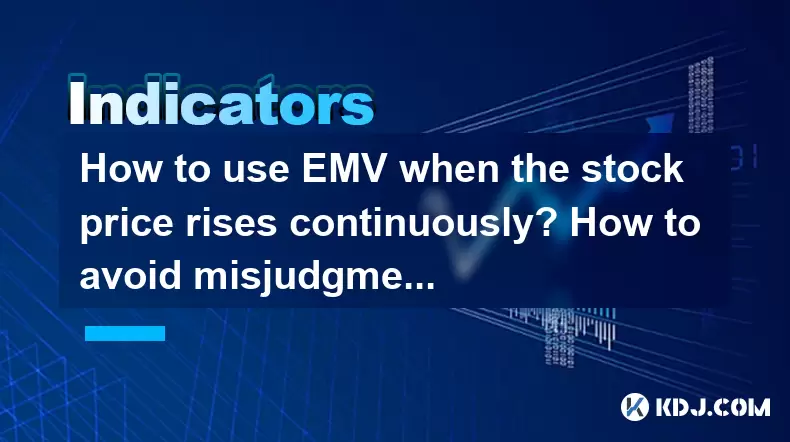
How to use EMV when the stock price rises continuously? How to avoid misjudgment in extreme market conditions?
May 23,2025 at 07:29pm
In the dynamic world of cryptocurrency trading, the Exponential Moving Average (EMA) is a powerful tool that traders use to make informed decisions, especially during periods of continuous stock price rises. Understanding how to effectively use EMAs and avoiding misjudgment in extreme market conditions are crucial skills for any crypto trader. This arti...
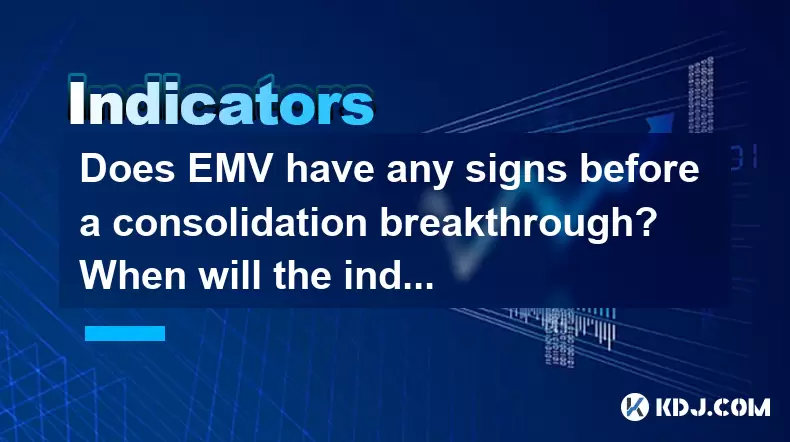
Does EMV have any signs before a consolidation breakthrough? When will the indicator give an early warning?
May 23,2025 at 06:42pm
Does EMV have any signs before a consolidation breakthrough? When will the indicator give an early warning? The Ease of Movement Value (EMV) is a technical indicator that helps traders understand the relationship between price and volume in the cryptocurrency market. It is particularly useful for identifying potential breakouts from consolidation period...
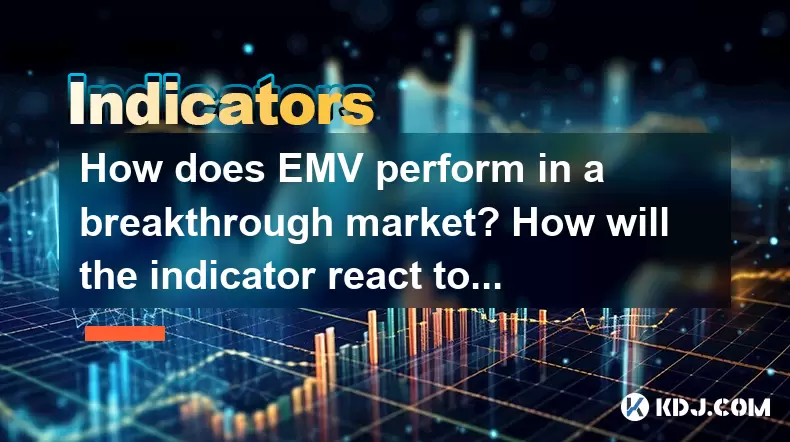
How does EMV perform in a breakthrough market? How will the indicator react to a false breakthrough?
May 23,2025 at 06:01pm
Introduction to EMV IndicatorThe Ease of Movement Value (EMV) indicator is a technical analysis tool that helps traders identify the relationship between price and volume in the cryptocurrency market. Developed by Richard W. Arms, Jr., the EMV indicator aims to measure the 'ease' with which prices move. In a breakthrough market, understanding how EMV pe...
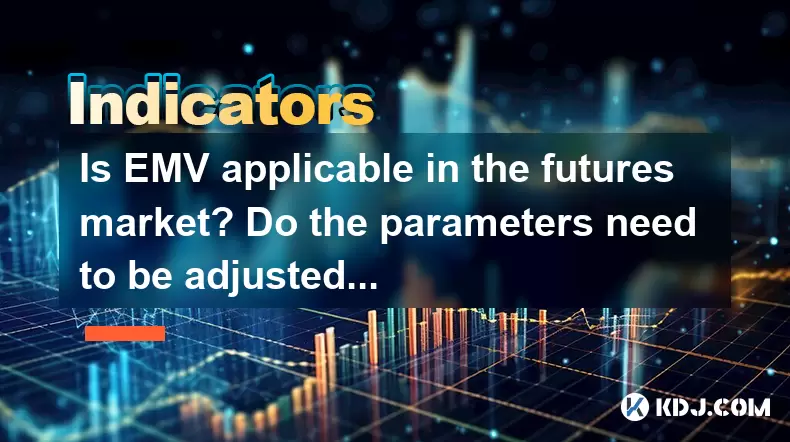
Is EMV applicable in the futures market? Do the parameters need to be adjusted in a leveraged environment?
May 23,2025 at 05:15pm
The application of Exponential Moving Average (EMV) in the futures market, particularly within a leveraged environment, is a topic that garners significant interest among traders. EMV, a type of moving average that places greater weight on recent price data, can be a useful tool for traders in the futures market. However, its effectiveness and the neces...
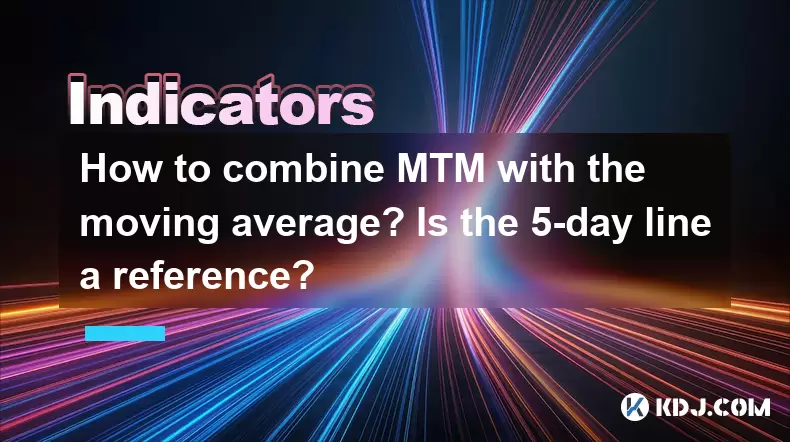
How to combine MTM with the moving average? Is the 5-day line a reference?
May 23,2025 at 03:35pm
Combining the Money Flow Index (MFI) with the moving average can provide a comprehensive approach to analyzing cryptocurrency market trends. The MFI, also known as the Money Flow Index, is a momentum indicator that measures the flow of money into and out of a security over a specified period. When combined with the moving average, traders can gain insig...
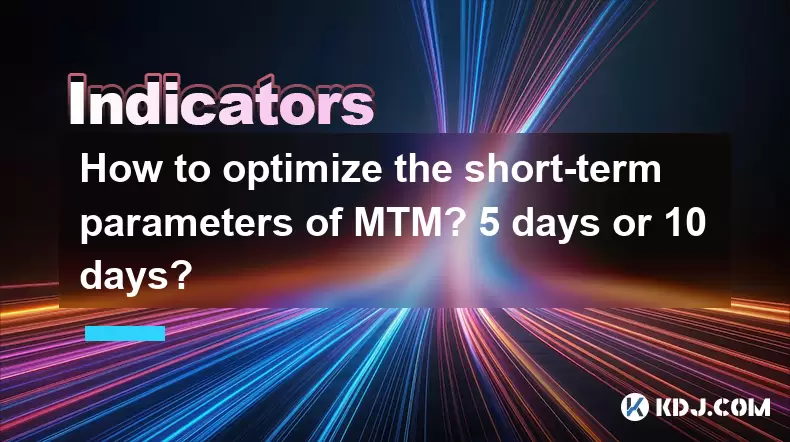
How to optimize the short-term parameters of MTM? 5 days or 10 days?
May 23,2025 at 08:07am
In the world of cryptocurrency trading, optimizing the short-term parameters of the Moving Time Model (MTM) is crucial for traders looking to maximize their profits. The MTM is a technical analysis tool that helps traders identify potential entry and exit points in the market by analyzing price movements over a specified period. The question of whether ...

How to use EMV when the stock price rises continuously? How to avoid misjudgment in extreme market conditions?
May 23,2025 at 07:29pm
In the dynamic world of cryptocurrency trading, the Exponential Moving Average (EMA) is a powerful tool that traders use to make informed decisions, especially during periods of continuous stock price rises. Understanding how to effectively use EMAs and avoiding misjudgment in extreme market conditions are crucial skills for any crypto trader. This arti...

Does EMV have any signs before a consolidation breakthrough? When will the indicator give an early warning?
May 23,2025 at 06:42pm
Does EMV have any signs before a consolidation breakthrough? When will the indicator give an early warning? The Ease of Movement Value (EMV) is a technical indicator that helps traders understand the relationship between price and volume in the cryptocurrency market. It is particularly useful for identifying potential breakouts from consolidation period...

How does EMV perform in a breakthrough market? How will the indicator react to a false breakthrough?
May 23,2025 at 06:01pm
Introduction to EMV IndicatorThe Ease of Movement Value (EMV) indicator is a technical analysis tool that helps traders identify the relationship between price and volume in the cryptocurrency market. Developed by Richard W. Arms, Jr., the EMV indicator aims to measure the 'ease' with which prices move. In a breakthrough market, understanding how EMV pe...

Is EMV applicable in the futures market? Do the parameters need to be adjusted in a leveraged environment?
May 23,2025 at 05:15pm
The application of Exponential Moving Average (EMV) in the futures market, particularly within a leveraged environment, is a topic that garners significant interest among traders. EMV, a type of moving average that places greater weight on recent price data, can be a useful tool for traders in the futures market. However, its effectiveness and the neces...

How to combine MTM with the moving average? Is the 5-day line a reference?
May 23,2025 at 03:35pm
Combining the Money Flow Index (MFI) with the moving average can provide a comprehensive approach to analyzing cryptocurrency market trends. The MFI, also known as the Money Flow Index, is a momentum indicator that measures the flow of money into and out of a security over a specified period. When combined with the moving average, traders can gain insig...

How to optimize the short-term parameters of MTM? 5 days or 10 days?
May 23,2025 at 08:07am
In the world of cryptocurrency trading, optimizing the short-term parameters of the Moving Time Model (MTM) is crucial for traders looking to maximize their profits. The MTM is a technical analysis tool that helps traders identify potential entry and exit points in the market by analyzing price movements over a specified period. The question of whether ...
See all articles

























